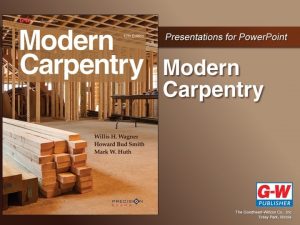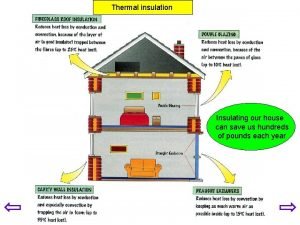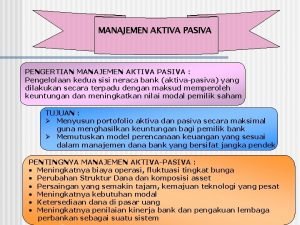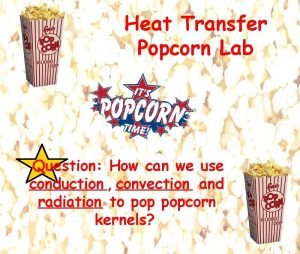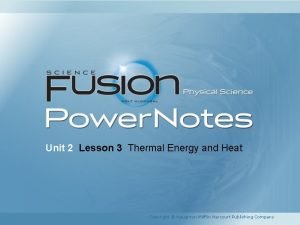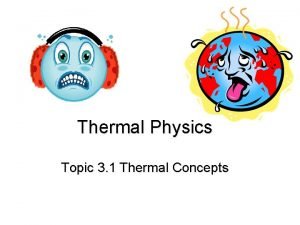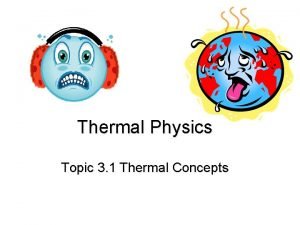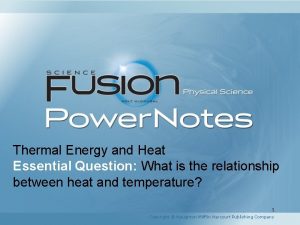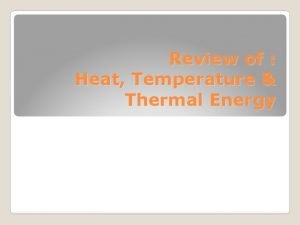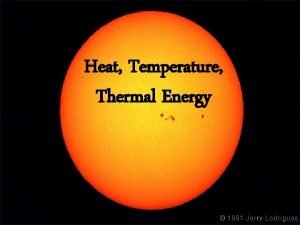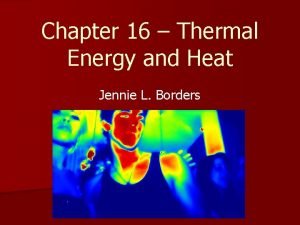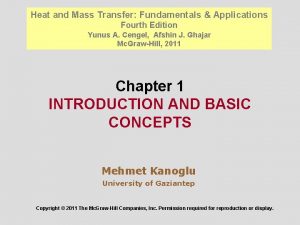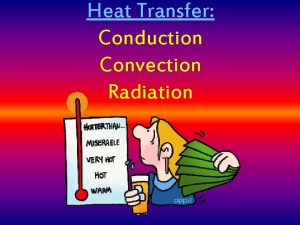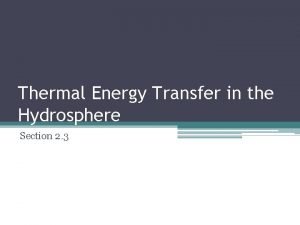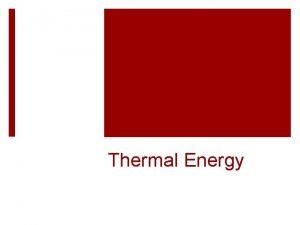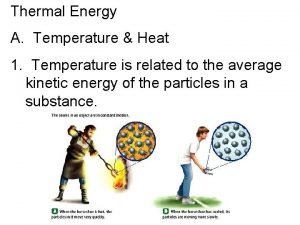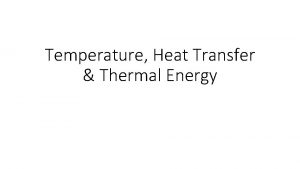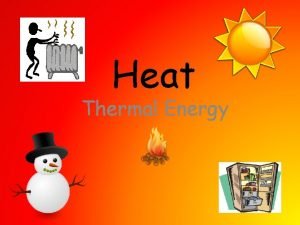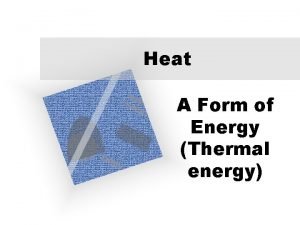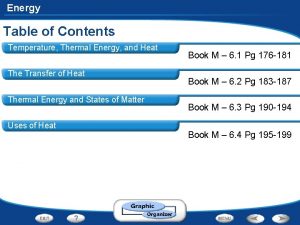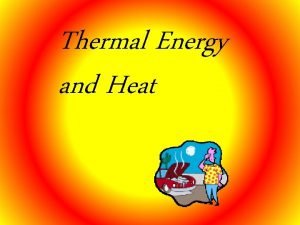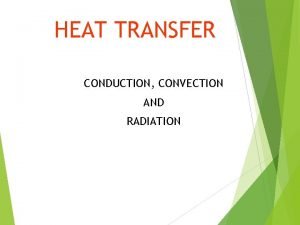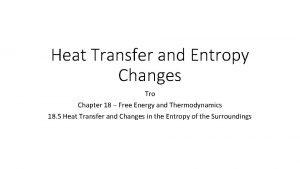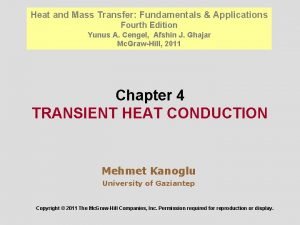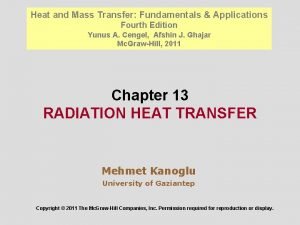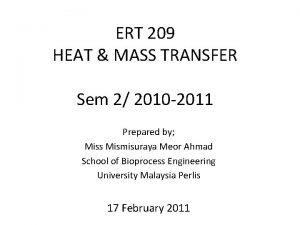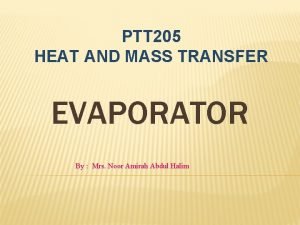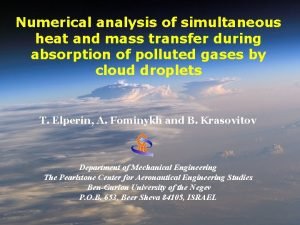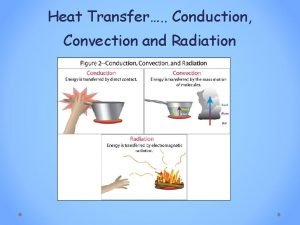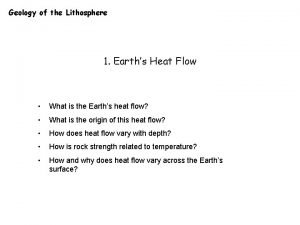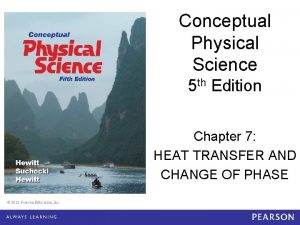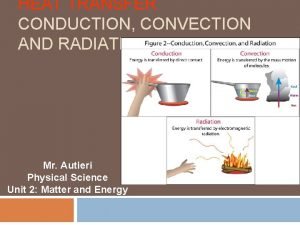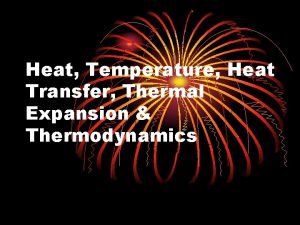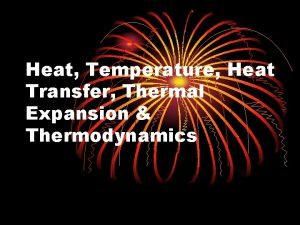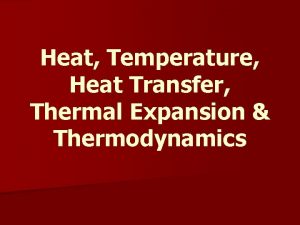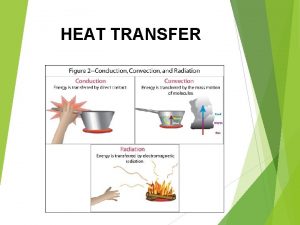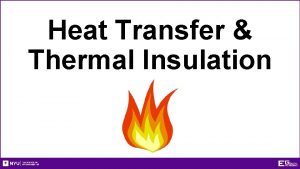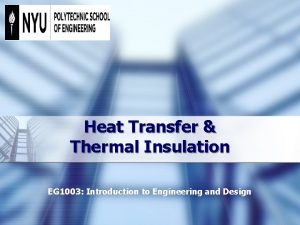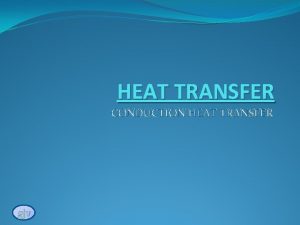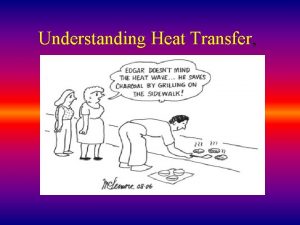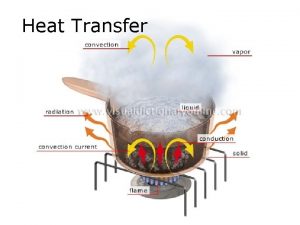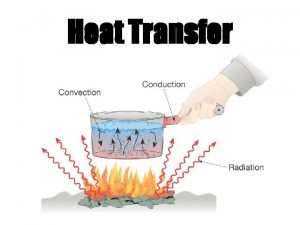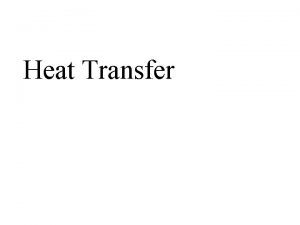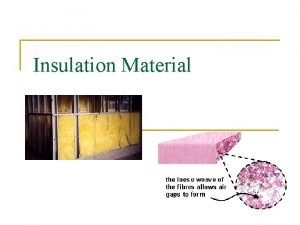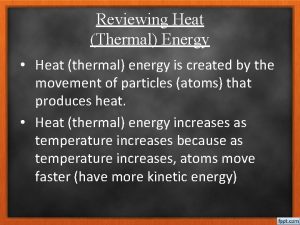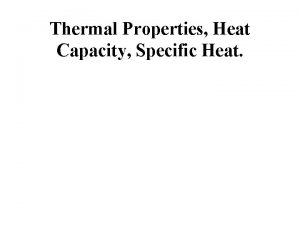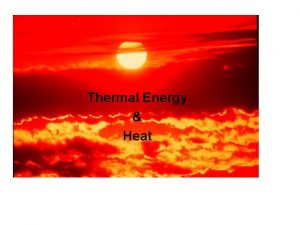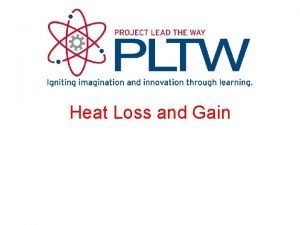POS Key Concepts Heat transfer Insulation and thermal





































- Slides: 37

POS § Key Concepts: § Heat transfer § Insulation and thermal conductivity § 2 a. Compare heat transmission in different materials (eg. Compare conduction of heat in different solids; compare the absorption of radiant heat by different surfaces

POS § 2 b. Explain how heat is transmitted by conduction, convection and radiation in solids, liquids and gases

Unit C: Heat and Temperature Topic 6: Energy Transfer http: //www. wisconline. com/objects/View. Object. aspx? I D=SCE 304

How is energy transferred? § Radiation § Conduction § Convection § Tea light garden pot heater § http: //www. bodymindsoulspirit. com/heata-room-for-only-15 -cents-a-day/

Back up…what is energy? § The ability to do work § Can not be created or destroyed, only transferred § Forms: § § § Chemical Mechanical Electrical Thermal Radiant (light) nuclear

Radiation (energy/transfer) § The only form able to travel through space § Emitted by the sun § Types of EMR Electromagnetic Radiation § § § § Radio waves Microwaves Infrared radiation Visible light spectrum ROYGBIV UV (ultraviolet) X-ray Gamma Ray Cosmic Rays


Albedo § Radiation is either reflected (by clouds, snow) or absorbed



What makes radiant energy special? § All radiant energy forms § Behave like waves § Can be absorbed and reflected by objects § Travel at the speed of light, 300 000 km/s

Conduction § Learning goals § Be able to explain conduction using the particle model of matter § Be able to explain that different materials conduct energy at different rates § Know that air is among poor heat conductors (insulation)




Conduction § Conduction is the process by which thermal energy is transmitted through collisions between neighboring particles § As temperature increases, particle speed increases, collisions increase, materials heat up more quickly § Common method of energy transfer for solids

Conduction § Conduction occurs when energy is passed directly from one item to another § If you stirred a pot of soup on the stove with a metal spoon, the spoon will heat up. The heat is being conducted from the hot area of the soup to the colder area of the spoon.

Good Conductors vs. Bad Conductors (Insulators) § metal § Air § Wood § Sleeping bags

Hot dog/Marshmallow sticks

Convection § Convection is the transfer of energy in fluids, that is, liquids and gases. § Hot fluids rise, cold fluids sink. § Flow is in a circular pattern

Convection-How it works § As temperature (thermal energy) increases: § § Particles move faster Spaces between particles increase The fluid becomes less dense Less dense fluids will float on top of more dense fluids § Helium balloons float in air § Molten wax floats on oil § Hot air floats on cold air

Convection-How it works § As temperature (thermal energy) increases: § § Particles move faster Spaces between particles increase (expansion) The fluid becomes less dense Less dense fluids will float on top of more dense fluids § Helium balloons float in air § Molten wax floats on oil § Hot air floats on cold air

Convection-How it works § As temperature (thermal energy) decreases: § § Particles move slower Spaces between particles decrease (contraction) The fluid becomes more dense More dense fluids will sink






Let’s go back to an earlier lesson and classify each example as § Conduction § Convection § Radiation

Clothing Irons

Clothes dryer


Stove, oven, furnace, fireplace

Thermal energy devices: § Bathroom/bedroom § Hair dryer § Curling/straightening/crimping iron § Electric blanket § Heaters § Radiator § Furnace

Cont’d § Kitchen § § Stove Coffee maker/tea kettle George Forman grill Microwave § Other § Fires-camping/candle/fireplace § Clothing Iron § Clothing dryer

Internet link § Learnalberta. ca LA 05 7660 § Heat Transfer by conduction Gizmo + questions § http: //www. explorelearning. com/index. cfm? method=c. Ext. Access. Secure. dsp. Resource&Res ource. ID=388

Assignments § Worksheet T 6 Radiation/Convection/Conduction § Topic 7+ 8 § Especially note Active and Passive Solar energy § Project pg 234 Making a Transfer § Review Q’s T 6 § pg 236 # 4 § Pg 237 #1, 2, 3, 4 § Take your own notes § Watch 1 st half of Crude Awakening: The Oil Crash
 Thermal transfer vs direct thermal printing
Thermal transfer vs direct thermal printing Chapter 17 thermal and sound insulation
Chapter 17 thermal and sound insulation Insulator for house
Insulator for house Sempatap thermal
Sempatap thermal Manajemen aktiva dan pasiva bank
Manajemen aktiva dan pasiva bank Popcorn heat transfer lab
Popcorn heat transfer lab Thermal energy section 3 using thermal energy
Thermal energy section 3 using thermal energy What is the difference between thermal energy and heat?
What is the difference between thermal energy and heat? Specific heat capacity of lead j/kg c
Specific heat capacity of lead j/kg c Difference between heat and thermal energy
Difference between heat and thermal energy Heat vs thermal energy vs temperature
Heat vs thermal energy vs temperature Flannel shirt conductor or insulator
Flannel shirt conductor or insulator Heat thermal energy and temperature
Heat thermal energy and temperature Temperature and heat
Temperature and heat Chapter 16 thermal energy and heat
Chapter 16 thermal energy and heat Heat transfer
Heat transfer Types of heat transfer
Types of heat transfer Thermal energy transfer
Thermal energy transfer Thermal energy
Thermal energy How to solve for thermal energy
How to solve for thermal energy Example of heat energy
Example of heat energy Sources of heat
Sources of heat Heat energy required formula
Heat energy required formula Thermal energy vs heat energy
Thermal energy vs heat energy Thermal energy vs heat
Thermal energy vs heat Q=mct
Q=mct What is heat transfer conduction convection and radiation
What is heat transfer conduction convection and radiation Example of radiation heat transfer
Example of radiation heat transfer Q system = -q surroundings
Q system = -q surroundings Heat and mass transfer cengel 4th edition pdf
Heat and mass transfer cengel 4th edition pdf Fundamental of heat and mass transfer
Fundamental of heat and mass transfer Heat and mass transfer
Heat and mass transfer Heat transfer in evaporator formula
Heat transfer in evaporator formula Simultaneous heat and mass transfer
Simultaneous heat and mass transfer Does heat travel in a straight line
Does heat travel in a straight line Heat-mass transfer and geodynamics of the lithosphere:
Heat-mass transfer and geodynamics of the lithosphere: Chapter 7 heat transfer and change of phase
Chapter 7 heat transfer and change of phase Heat transfer by conduction convection and radiation
Heat transfer by conduction convection and radiation

